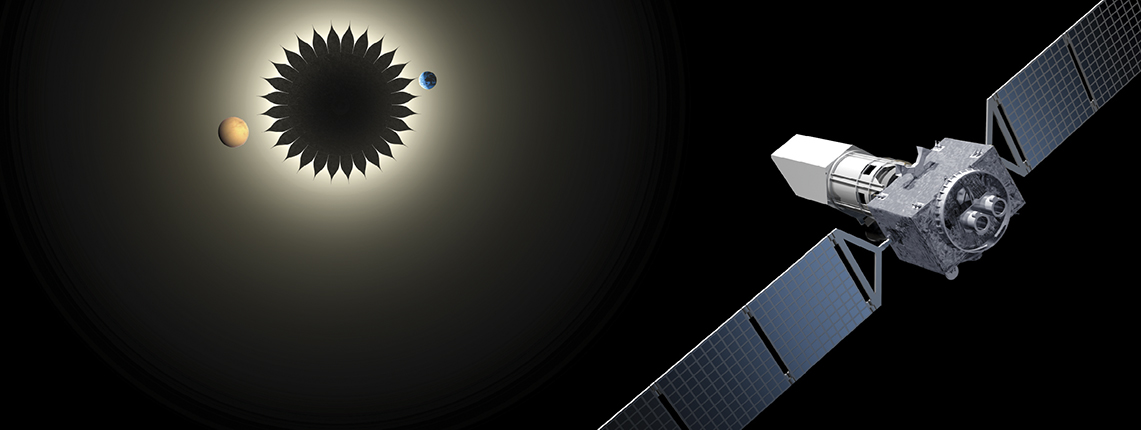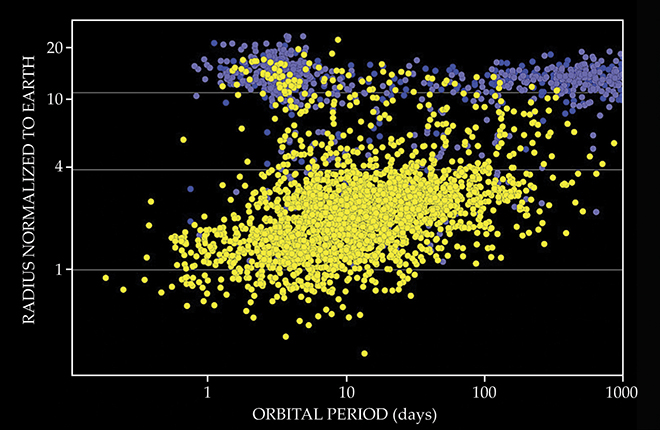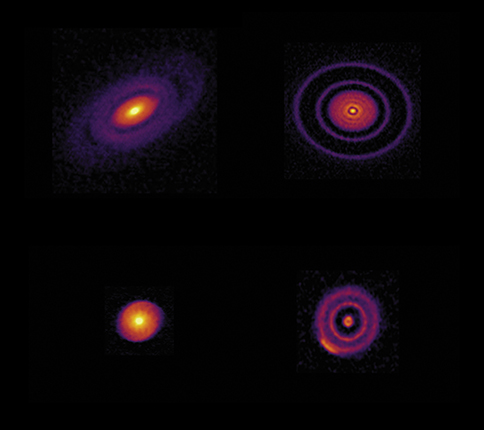Exoplanet research evolves with statistical and technological advances
DOI: 10.1063/PT.3.4160
Planet finding has become mainstream,” says MIT astrophysicist Sara Seager. “It’s remarkable how quickly it went from being hard and challenging to ‘Hey, let’s train the next student to find planets.’ ”
In the roughly quarter century since the first exoplanets were discovered, astronomers have found thousands of them. And the field is shifting from tallying celestial bodies to unraveling mysteries: How do planetary systems form? How do planets form? How typical is our solar system? Is there life elsewhere?
In the decade following the first discoveries, scientists studied exoplanets one at a time. Then statistical studies ramped up because of the many planets found by NASA’s Kepler mission, which monitored a 115 square-degree patch of sky from 2009 to 2018. The Transiting Exoplanet Survey Satellite (TESS), launched last year, marries the two approaches. TESS will scan 85% of the sky to identify candidate planets, which astronomers can then study in detail with other instruments; the planets that Kepler found are typically too distant and faint for detailed characterization. “The science is maturing,” Seager says. “If we get enough planets with TESS and measure mass, orbital properties, atmospheric properties, and so on, we’ll be able to solve some of the growing list of puzzles.” (See also the interview with Seager at http://physicstoday.org/seager

A Starshade Mission would pair an occulter (left) with an imaging craft to find exoplanets. The planets become visible when the starlight is blocked.
NASA/JPL

Beyond TESS, the community is planning future space missions and ground-based instruments to understand formation of planetary systems and identify possible signs of life. A pathway, including possible missions, is laid out in Exoplanet Science Strategy, a report by the National Academies of Sciences, Engineering, and Medicine, released last September. Its recommendations will be submitted to the 2020 decadal survey of astronomy and astrophysics.
Stars and planets
The transit method is responsible for the most exoplanet detections to date—out of some 3891 confirmed detections as of press time, the Kepler satellite found 2695 and TESS spotted 3. Slight periodic dimming in a star indicates an orbiting planet that partially blocks light from its host star, from which the planet’s diameter can be obtained. (See the article by Jonathan Lunine, Bruce Macintosh, and Stanton Peale, Physics Today, May 2009, page 46
Other methods for spotting planets include radial velocity, direct imaging, astrometry, and gravitational microlensing. The methods are sensitive to different types, sizes, and orbital separations of planets and stars, and they reveal different characteristics of the systems. Kepler found planets mostly within 1 AU (the mean distance between the Sun and Earth) of their host star. The radial-velocity method goes out to roughly 5 AU, and direct imaging is most sensitive to planets with orbits greater than about 20 AU (the orbit of Uranus). The gap from 5 AU to 20 AU can be observed by gravitational microlensing, in which an exoplanet introduces a blip in the way its host star bends a background star’s light. Gravitational microlensing can spot small and distant planets. To date, the method is credited with finding 72 exoplanets.
With the radial-velocity method, a periodic Doppler shift in starlight indicates the back-and-forth pull on the star by an orbiting planet. The method gives a lower limit on the planet’s mass, which can be obtained if the orbit inclination is known. The approach is best suited to high-mass planets with low-mass host stars because their gravitational pull is greater and therefore more easily detected. If the same system is observed with the transit and radial-velocity methods, the size and mass give the planet’s density. From that, scientists can glean whether the planet is rocky or gaseous.

The Kepler mission gave the field of exoplanets a big kick, from pure counting to statistical studies. This plot shows the 3567 confirmed exoplanets that had been discovered as of 14 December 2017. Yellow dots represent the 2525 planets found by Kepler, with blue and violet dots indicating planets found before and after Kepler.
NASA

The two most important findings about exoplanets so far are their sheer numbers—the galaxy contains many more planets than stars—and their diversity, says Ignas Snellen of Leiden University in the Netherlands. In particular, the planetary systems that have been discovered are unlike our solar system, so then the question is, “Are we unique?” The jury is still out on whether Earthlike planets and planetary systems similar to our solar system are actually rare. “It could be that our instruments have not been sensitive to the right-sized planets at the right distance from the right type of star,” Snellen says.
Super-Earths and hot Jupiters
“Solar systems are hard to see,” says Stanford University’s Bruce Macintosh. “And the realization that our solar system may not be typical is spectacularly exciting.” It was lucky for Kepler that there are so many medium-sized planets at 1 AU or closer, he adds.
Those medium-sized planets—larger than Earth by a factor of 1.6 to 4—are a perplexing discovery. They are very common, so astronomers wonder why our solar system doesn’t have one and what they are. From the density alone, astronomers can’t tease out whether those exoplanets are mostly rocky with a lightweight atmosphere made of hydrogen and helium or are mostly water and methane and resemble ice giants like Neptune.
Figuring out the composition of the super-Earths—or mini-Neptunes—would help answer where they formed, says Andrew Vanderburg of the University of Texas at Austin. If they are mostly water, they probably formed far from their host star, where water and methane exist as ice. If they are mostly rocky with a layer of hydrogen and helium, they probably formed close to their host star. “It’s a really challenging question,” he says. “We are left grasping.”
Hazes have stymied efforts with the Hubble Space Telescope to obtain direct spectroscopic measurements of individual exoplanet atmospheres. But the James Webb Space Telescope (JWST), which is scheduled to launch in 2021, is more sensitive and, because it will observe in the IR, is better able to peer through planetary haze. Another approach to studying the super-Earths is to look for correlations between planet size and temperature. A theory that is gaining traction, Vanderburg says, relates to how hydrogen gas evaporates: Planets shrink if the gas around them evaporates, so close to their host star, smaller planets are hotter.
Astronomers are also trying to crack the super-Earth/mini-Neptune puzzle by looking at planets with special characteristics. The planet WASP-47e, for example, has a short orbit of 19 hours. That means it’s hot, so any hydrogen gas it may once have had would be gone, and there is one less variable to worry about. If it started off as rock, its density should be close to that of Earth, whereas if it started with methane, water, and hydrogen, a lower density is expected. For WASP-47e, “spectroscopic observations suggest water or methane,” says Vanderburg. The bottleneck in understanding the super-Earths is characterizing them, he says. “When JWST launches, we’ll look at individual planets and then leverage what we learn to get hints about what to study next.”
The most common stars in the Milky Way are red dwarfs, or M stars. They are smaller, dimmer, and cooler than the Sun, so the so-called habitable zone, where the temperature is consistent with life, is closer in (see the Commentary by David Stevenson, Physics Today, November 2018, page 10
“A lot of people are looking for planets around M stars because it’s easier to find planets that are more Earthlike,” says Andreas Quirrenbach of the University of Heidelberg. “And with the technology in 10 years, it will be possible to get spectra and study their atmospheres.” (See the article by John Johnson, Physics Today, March 2014, page 31
Hot Jupiters—gas giants that are close to their host star—are another type of exoplanet not found in our solar system. How and where they form are open questions. It’s widely held that the early stage of planet formation involves the clumping of dust, small rocks, and ice. (See Physics Today, November 2015, page 16
“I am interested in planets of all shapes and sizes. Right now, I focus on gas giants because the larger the planet relative to the star, the larger the signal,” says Laura Kreidberg, who studies planetary atmospheres as a junior fellow at the Center for Astrophysics|Harvard & Smithsonian. “The amount of water in a planet’s atmosphere provides a fossil record of the formation of the planet.” With current instruments, she says, water is the easiest molecule to detect, but with future facilities, methane, carbon dioxide, and other chemical species will be observable. (See the Quick Study by Heather Knutson, Physics Today, July 2013, page 64
“Hot Jupiters can’t form near their stars because there isn’t enough material, but if they form far from the star, how do they get close in?” says Anne-Marie Lagrange of the University of Grenoble Alpes in France. Do they fall into the star by gravitational pull and lose energy due to friction? Are they pulled in by the gravity of another planet? Studying how well the orbits line up may give clues to planet formation. “Thirty years ago we knew little about how planetary systems form. We still have many questions, but the progress is incredible,” Lagrange says.
Atmospheric disequilibrium
Atmospheric composition is also the best shot astronomers have of detecting life on exoplanets. “Disequilibrium is a hallmark of life,” says Scott Gaudi of the Ohio State University and the cochair of the National Academies study on exoplanet research. Methane and oxygen react to form water and carbon dioxide. For both methane and oxygen to be abundantly present in a planetary atmosphere requires living sources—oxygen can come from photosynthesis and methane from bacteria, for example. The most likely scenario would be to find simple life, as was the case on Earth for most of its existence. “Knowing if there is life on other worlds is a big-picture question,” says Gaudi, “and the fact that we can answer it soon makes this time different from any other time in human history.”

Some of the many protoplanetary systems that have been imaged by the Atacama Large Millimeter/Submillimeter Array in Chile are shown here. By studying them, astronomers hope to learn more about planetary formation.
ALMA (ESO/NAOJ/NRAO), S. ANDREWS ET AL.; N. LIRA

For now, the exoplanet community is making hay with the data that started flowing in from TESS last summer. Dozens of ground-based facilities worldwide are targeting for study stars TESS finds that seem likely to harbor planets. As extremely large ground-based telescopes, with mirrors 20–40 meters in diameter, begin coming on line next decade, it will become possible to measure masses of smaller planets and to image and characterize atmospheres of both transiting and nontransiting planets. And current and future space-based observatories will bring to bear additional astrometry and microlensing tools for the search and study of exoplanets. The European Space Agency’s Gaia, for example, is using astrometry to identify likely planetary systems. And NASA’s Wide Field Infrared Survey Telescope, now scheduled for a mid 2020s launch, will help complete the exoplanet census with its microlensing survey.
The US community is pursuing possible missions with launch dates foreseen in the 2030s. The National Academies report recommends that NASA “lead a large strategic direct imaging mission capable of measuring the reflected-light spectra of temperate terrestrial planets orbiting Sun-like stars.” The two most-studied missions that could fit that bill are the Habitable Exoplanet Observatory and the Large UV Optical Infrared Surveyor.
A leading proposed method for directly imaging planets involves a starshade with a pair of spacecraft working together: One carries the shade and the other does the imaging (see page 24). Current specifications put the shade at tens of meters in diameter and tens of thousands of kilometers from the imaging craft.
The studies of stars and exoplanets all feed into questions about the physics of planetary surfaces, atmospheres, and interiors; how planetary systems formed; why there is such a diversity; and, ultimately, the search for life. Four pillars make up the broader field, says Gaudi. (See the article by Mario Livio and Joe Silk, Physics Today, March 2017, page 50
More about the Authors
Toni Feder. tfeder@aip.org
